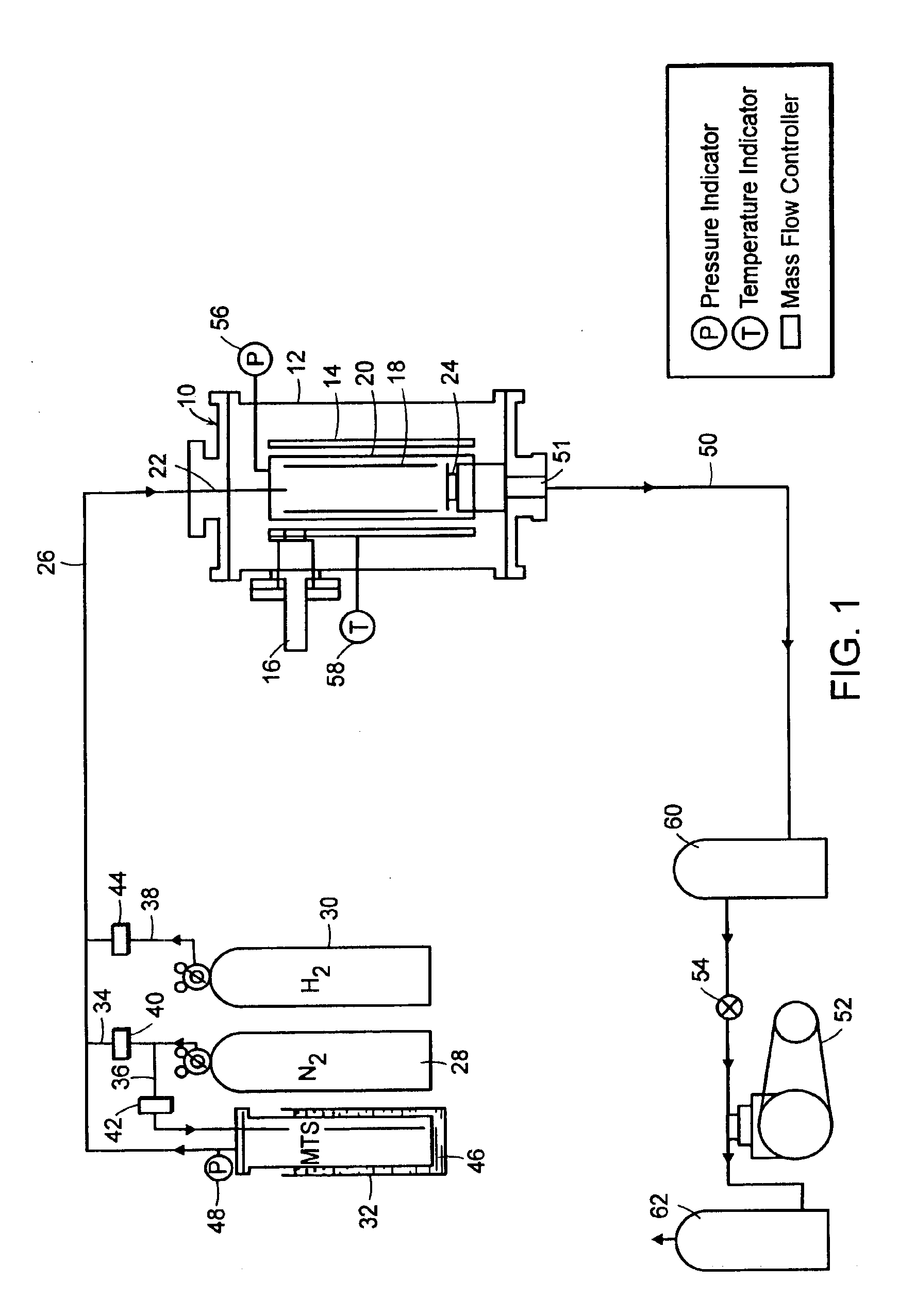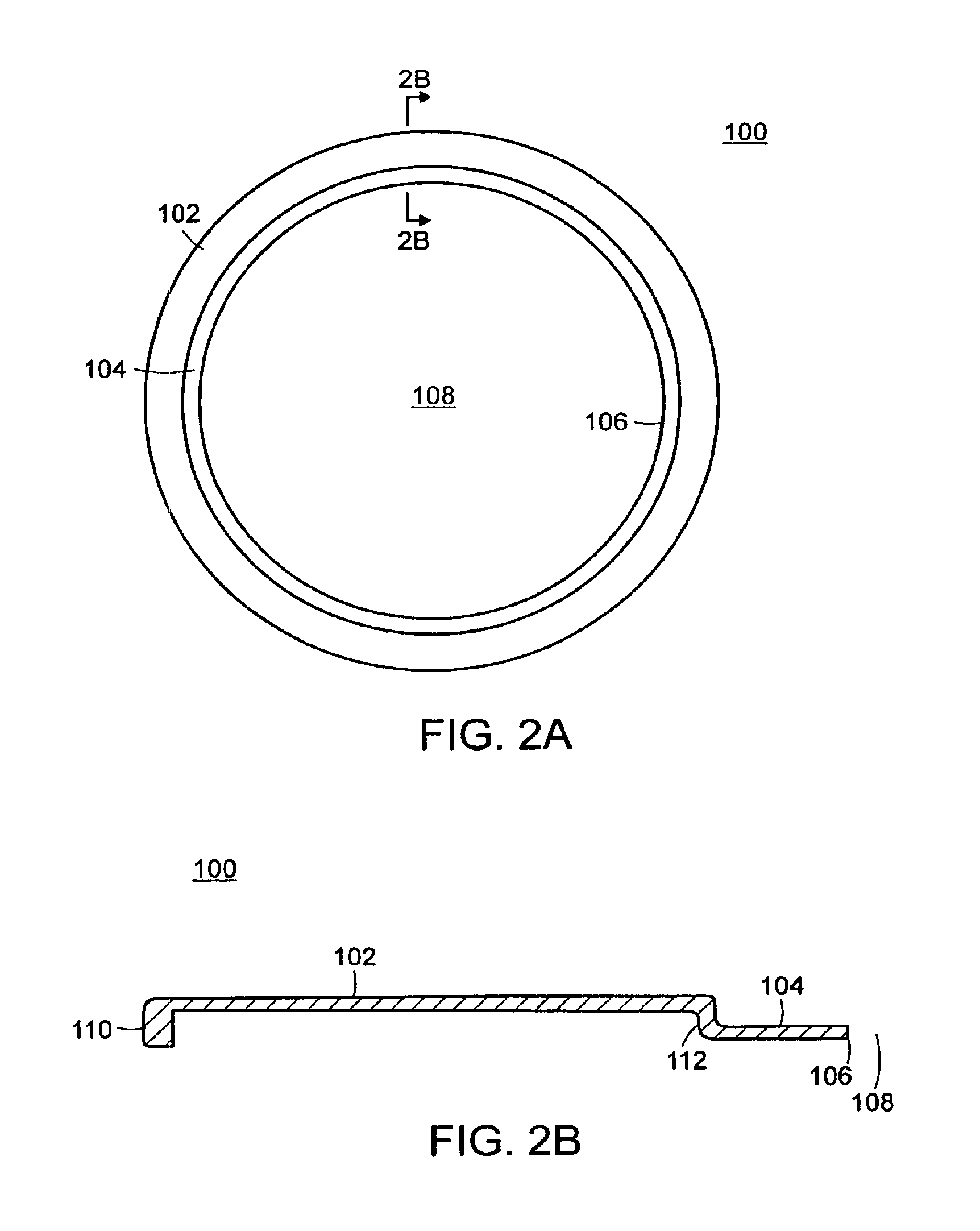Low resistivity silicon carbide
a technology of silicon carbide and low resistivity, which is applied in the direction of coating, chemical vapor deposition coating, metallic material coating process, etc., can solve the problems of limited use of high resistivity in other applications, limited use of high resistivity in fabricating components that require a greater degree of electrical conductivity, and restricted use of high resistivity in applications. , to achieve the effect of improving performance, reducing the risk of cracking and low resistivity
- Summary
- Abstract
- Description
- Claims
- Application Information
AI Technical Summary
Benefits of technology
Problems solved by technology
Method used
Image
Examples
example 1
[0049]An opaque, low resistivity silicon carbide was produced according to a method of the present invention in an apparatus similar to that illustrated in FIG. 1 with the following process conditions: deposition temperature=1350° C., total furnace pressure=300 torr, hydrogen partial pressure=92 torr, MTS partial pressure=17 torr, and nitrogen partial pressure=191 torr. The nitrogen partial pressure corresponded to 63.6% of nitrogen in the process. One inch equals 2.54 centimeters. Six resistivity samples were fabricated from different locations in one plate (24×29-inches). The resistivity values fell in the range of 0.057-0.071 ohm-cm. The average electrical resistivity of the six samples was 0.064 ohm-cm. The deposition thickness range was 0.24-0.564-inches yielding a deposition rate of 2.7-6.3 mil / hour. The silicon carbide was characterized for thermal conductivity by laser flash technique, solid phase N2 concentration by secondary ion mass spectroscopy, and purity by gas dischar...
example 2
[0051]An opaque, low resistivity silicon carbide was produced according to a method of the present invention in an apparatus similar to that illustrated in FIG. 1 with the following process conditions: deposition temperature=1350° C., total furnace pressure=400 torr, hydrogen partial pressure=100 torr, MTS partial pressure=16 torr, and nitrogen partial pressure=284 torr. The nitrogen partial pressure corresponded to 72% of nitrogen in the process. Six resistivity samples were fabricated from different locations in one plate (24×29-inches). The resistivity values fell in the range of 0.04-0.043 ohm-cm. The average resistivity of the six samples was 0.041 ohm-cm. The deposition thickness range for 78 hour deposition was 0.172-0.355-inches yielding a deposition rate of 2.2-4.5 mil / hour. The material was characterized as in Example 1 and the results are given below:
[0052]
PropertyValueThermal conductivity227-283 W / mKSolid phase N2 conc.4.2 × 1019 atoms / ccChemical impurity1.85 (ppmw)
The a...
example 3
[0053]An opaque, low resistivity silicon carbide was produced according to a method of the present invention in an apparatus similar to that illustrated in FIG. 1 with the following process conditions: deposition temperature=1350° C., total furnace pressure=650 torr, hydrogen partial pressure=110 torr, MTS partial pressure=17 torr, and nitrogen partial pressure=523 torr. The nitrogen partial pressure corresponds to 80% of nitrogen in the process. Six resistivity samples were fabricated from different locations in one plate (24×29-inches). The resistivity values fell in the range of 0.015-0.028 ohm-cm. The average resistivity was 0.021 ohm-cm. The deposition thickness range for 84 hours of deposition was 0.134-0.302-inches yielding a deposition rate of 1.6-3.6 mil / hour. The material was characterized as in Example 1 and the results are given below:
[0054]
PropertyValueThermal conductivity220-257 W / mKSolid phase N2 conc.7.6 × 1019 atoms / ccChemical impurity2.07 (ppmw)
The above property v...
PUM
| Property | Measurement | Unit |
|---|---|---|
| temperatures | aaaaa | aaaaa |
| wavelength | aaaaa | aaaaa |
| absorption coefficient | aaaaa | aaaaa |
Abstract
Description
Claims
Application Information
 Login to View More
Login to View More - R&D
- Intellectual Property
- Life Sciences
- Materials
- Tech Scout
- Unparalleled Data Quality
- Higher Quality Content
- 60% Fewer Hallucinations
Browse by: Latest US Patents, China's latest patents, Technical Efficacy Thesaurus, Application Domain, Technology Topic, Popular Technical Reports.
© 2025 PatSnap. All rights reserved.Legal|Privacy policy|Modern Slavery Act Transparency Statement|Sitemap|About US| Contact US: help@patsnap.com


